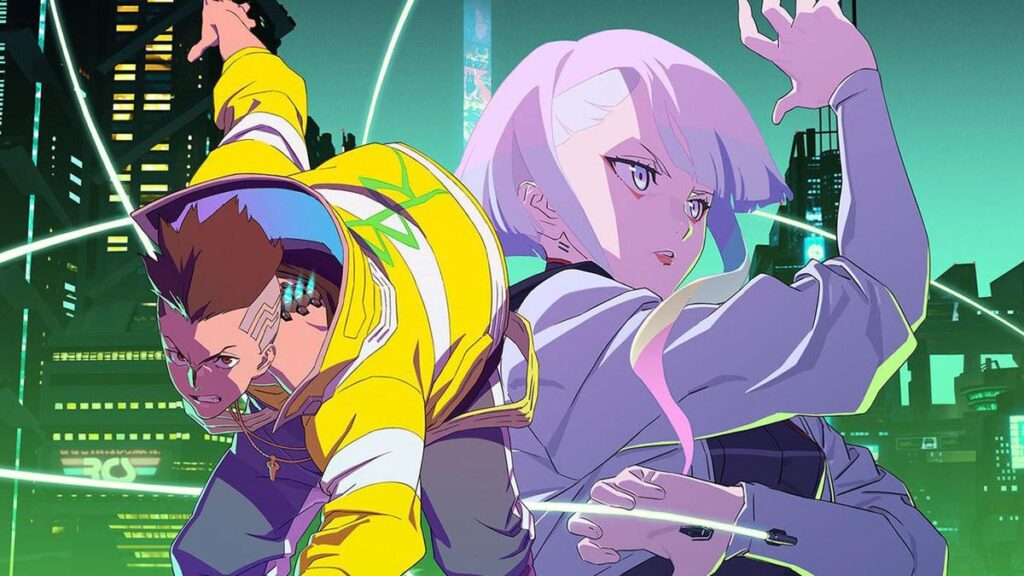When people hear the word “punk,” some might think of leather jackets and crazy hair, or bands like the Clash and the Ramones. But at its core, punk is an attitude, a defiant middle finger to those in power. Netflix’s new original animated TV series, Cyberpunk: Edgerunners, is one of the best portrayals in recent media of what it means to be punk, and does so in an incredibly dark, gritty, yet colorful and artistic way.
The show follows David Martinez and his tragic transition from a rebellious “street kid” into a ruthless cyberpunk, as well as exploring the cycle of violence that exists under a capitalist society that is controlled by mega-corporations.
Night City, like other famous settings (namely Gotham from the Batman universe), feels like its own character. It lives and breathes, you can smell the stench of urine on the streets and cigarette smoke in buildings. This is all represented with immense creativity by the amazing choice of color palette and visual style from the Japanese animation studio Trigger.
In the first five minutes of the show, the viewer is presented with a gritty display of what everyday life is like in this futuristic yet dystopian world. Violence is around every corner, blood-ridden crime scenes are commonplace, people are suffering from substance abuse on the sidewalk and trauma response vehicles fly by every few minutes. But the most off-putting aspect of this city is the fact that nobody seems even slightly concerned about the chaos going on around them. Death has become just an everyday thing for them.
Desensitization of death and violence is a prevalent theme in the show. When David’s mom dies due to their lack of quality healthcare, he doesn’t react as dramatically as someone might react in real life. It definitely has an effect on him, but it isn’t seen as a tragedy, just unfortunate. This perception of death continues throughout the show. It isn’t seen quite as severely as the audience might expect, which is truly frightening.
The way that the characters treat death, along with the portrayal of Night City as a ruthless, capitalistic prison create a looming sense of hopelessness. No matter how many jobs David works, he’s ultimately powerless in the face of the corporations that stand above him. No amount of money, murder, sabotage or rebellion will ever make a dent in the establishment, but despite that fact, our cast of characters fight on anyways. That’s what it means to be punk, after all.
The feeling of despair is further amplified by the plotless feel of the show. There isn’t one main antagonist, one “bad guy” to take down. All there is to the plot is the characters’ struggle to survive, paired with their ambitions and desires that tragically seem far too out of reach. The show doesn’t follow their journey to kill a corporate higher-up, or blow up their buildings, it follows their struggles, relationships and dreams, as well as their ends.
The most disturbing aspect of this show, however, comes after the end credits roll. When you sit back, think about everything you just watched unfold over the course of 10 episodes and four hours. You begin to realize that the world of Cyberpunk: Edgerunners isn’t entirely fictional.
Corporations similar to those displayed in the show already exist. The lack of universal healthcare is a real issue that affects millions of people every day. The only thing left is for our technology to develop enough to begin cybernetic implants, and we might soon be experiencing our own version of Night City. If this is to be our future, I wonder how many of us will become cyberpunks, scream and shout into the impenetrable void of capitalism, despite the hopelessness.
Photo courtesy of Netflix





Leave a Reply